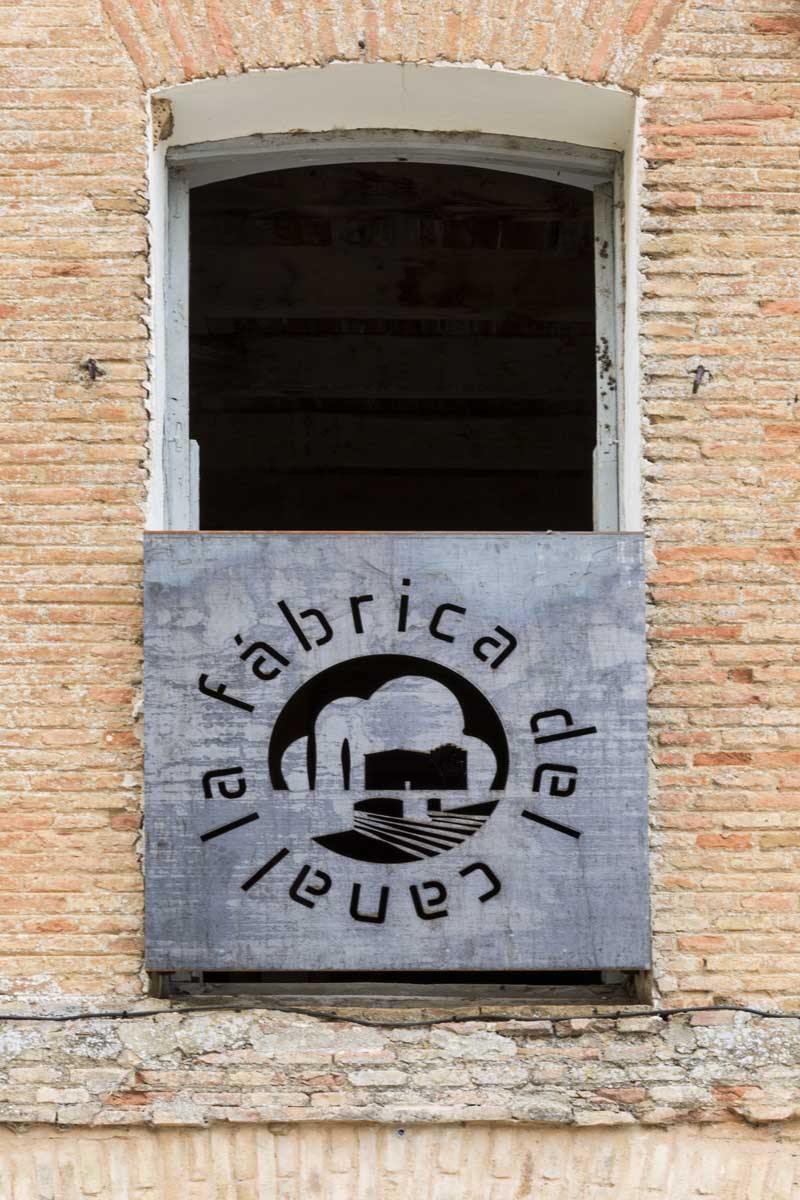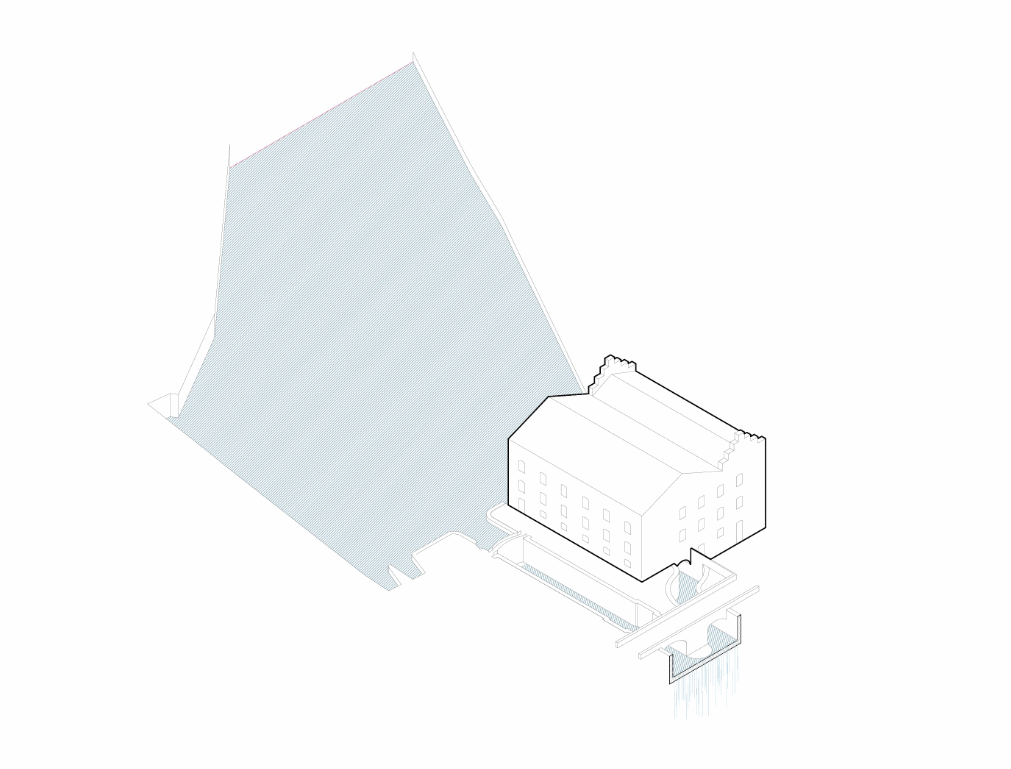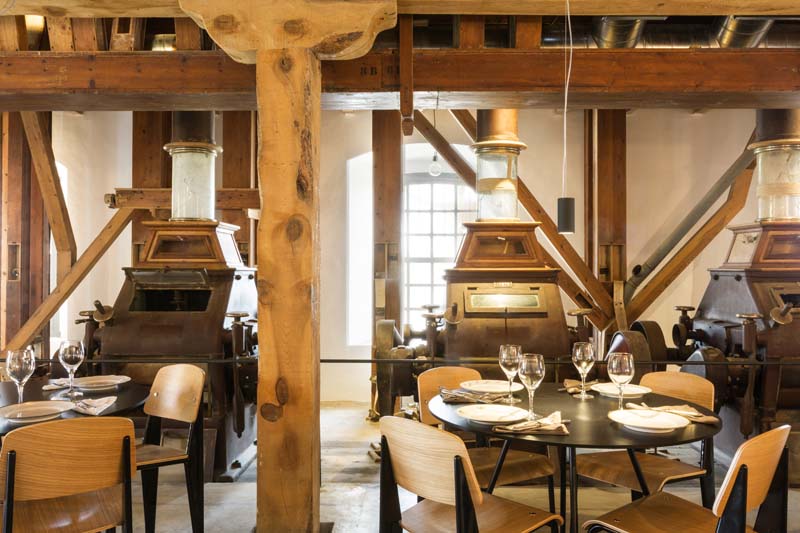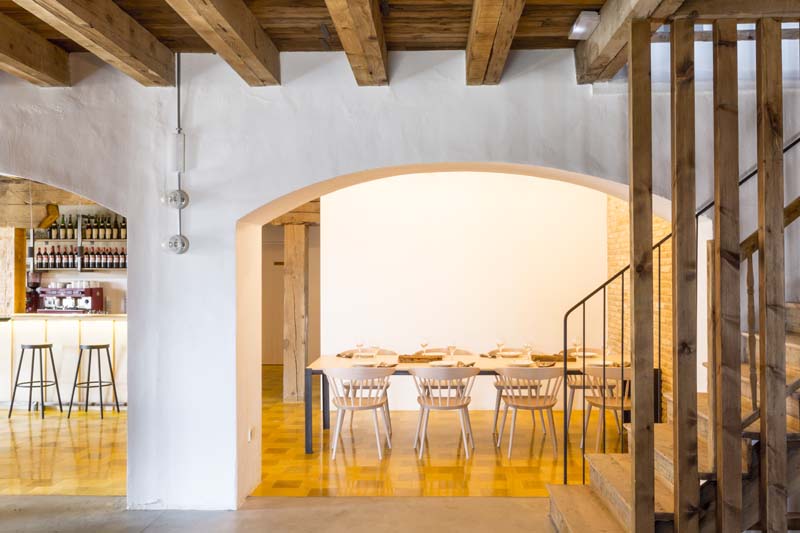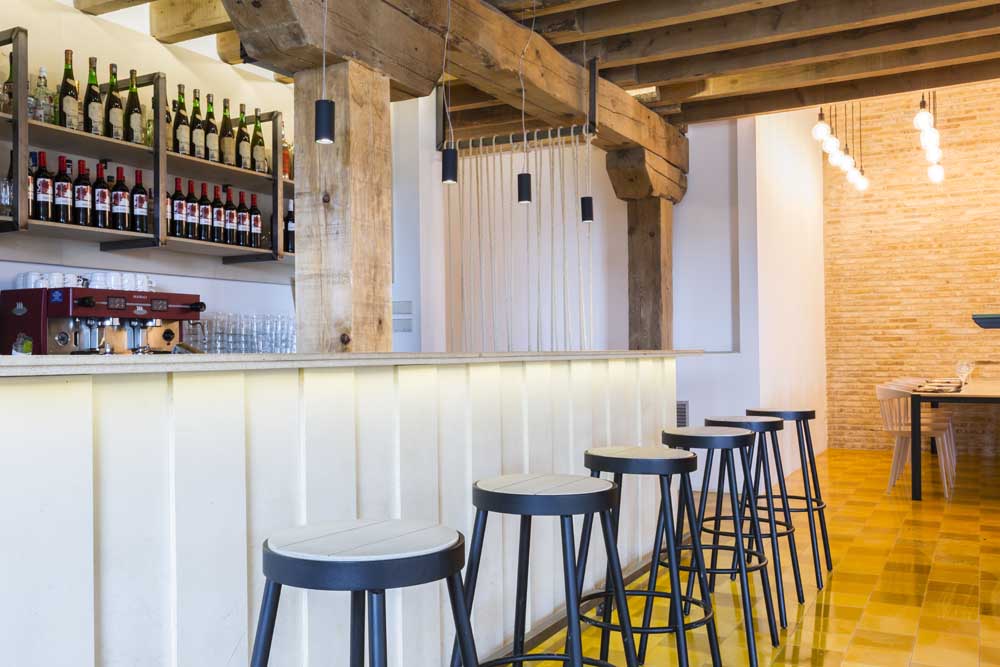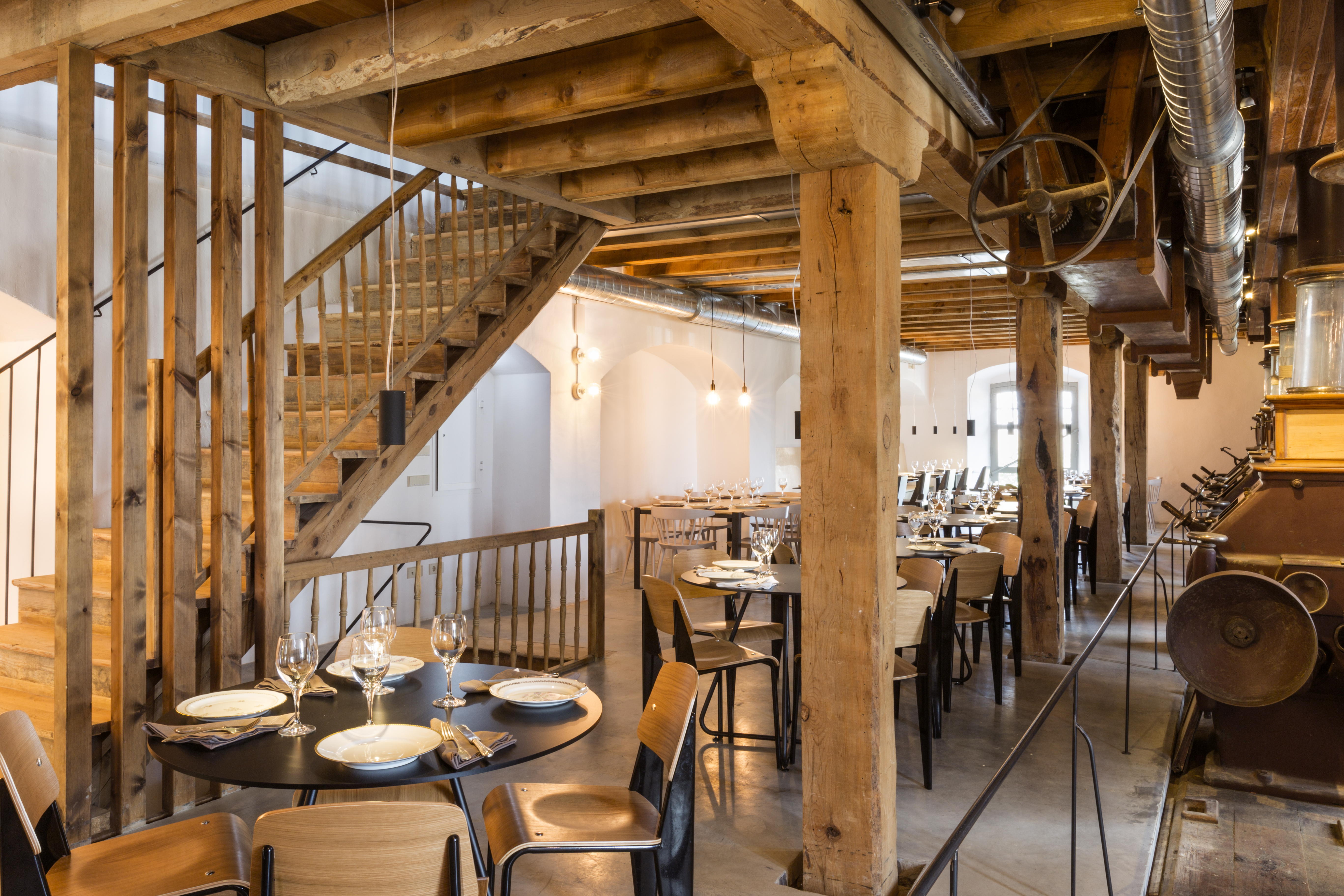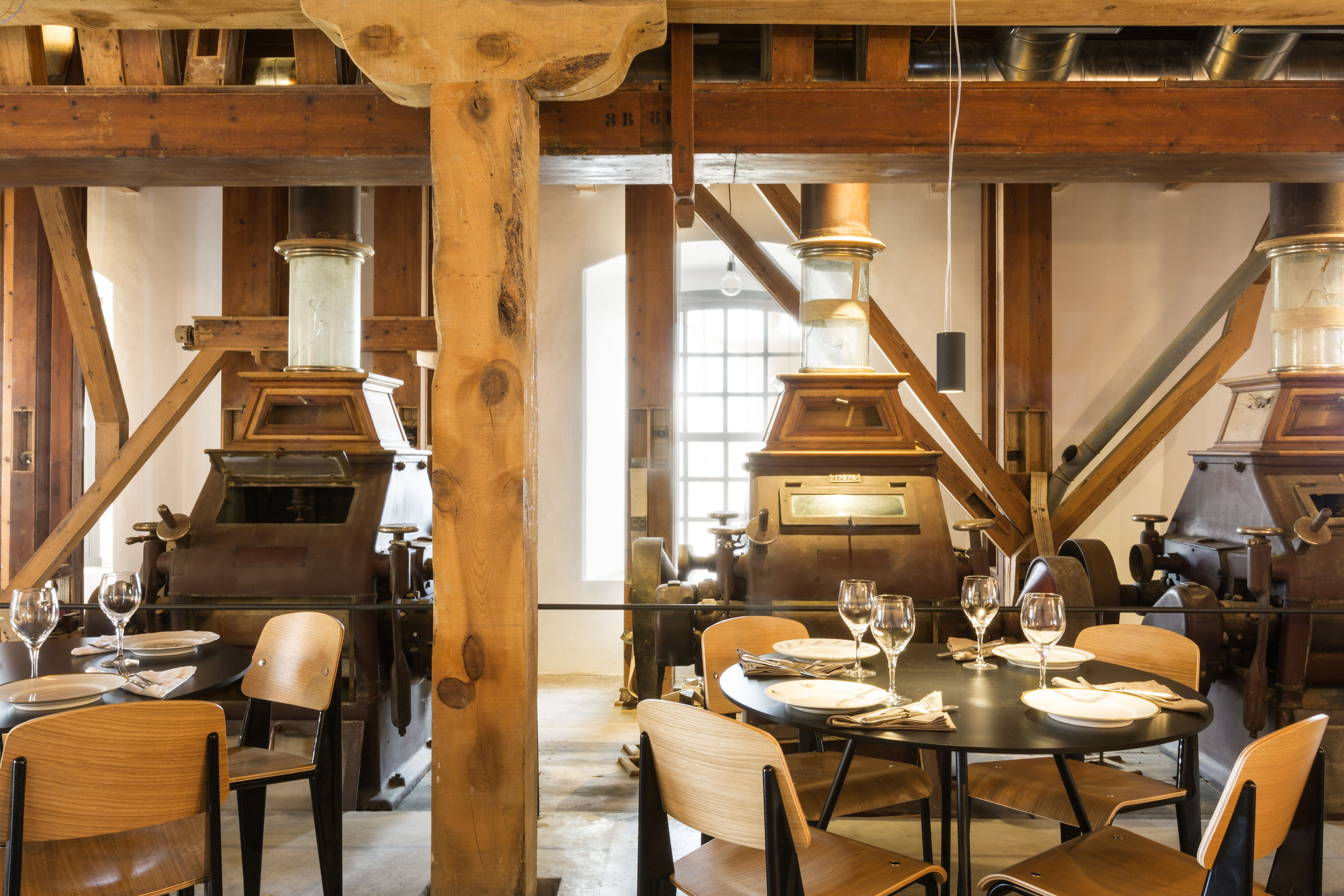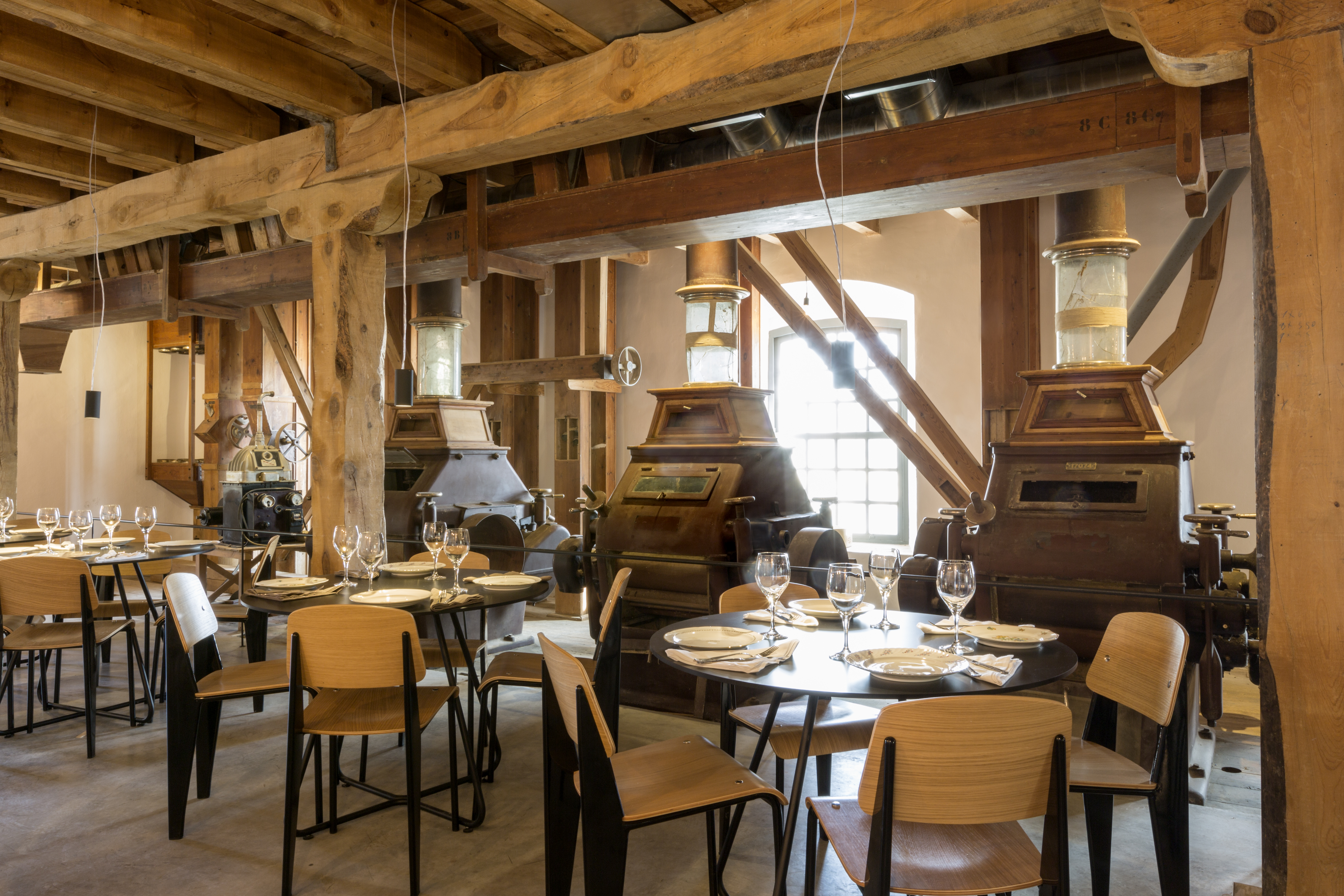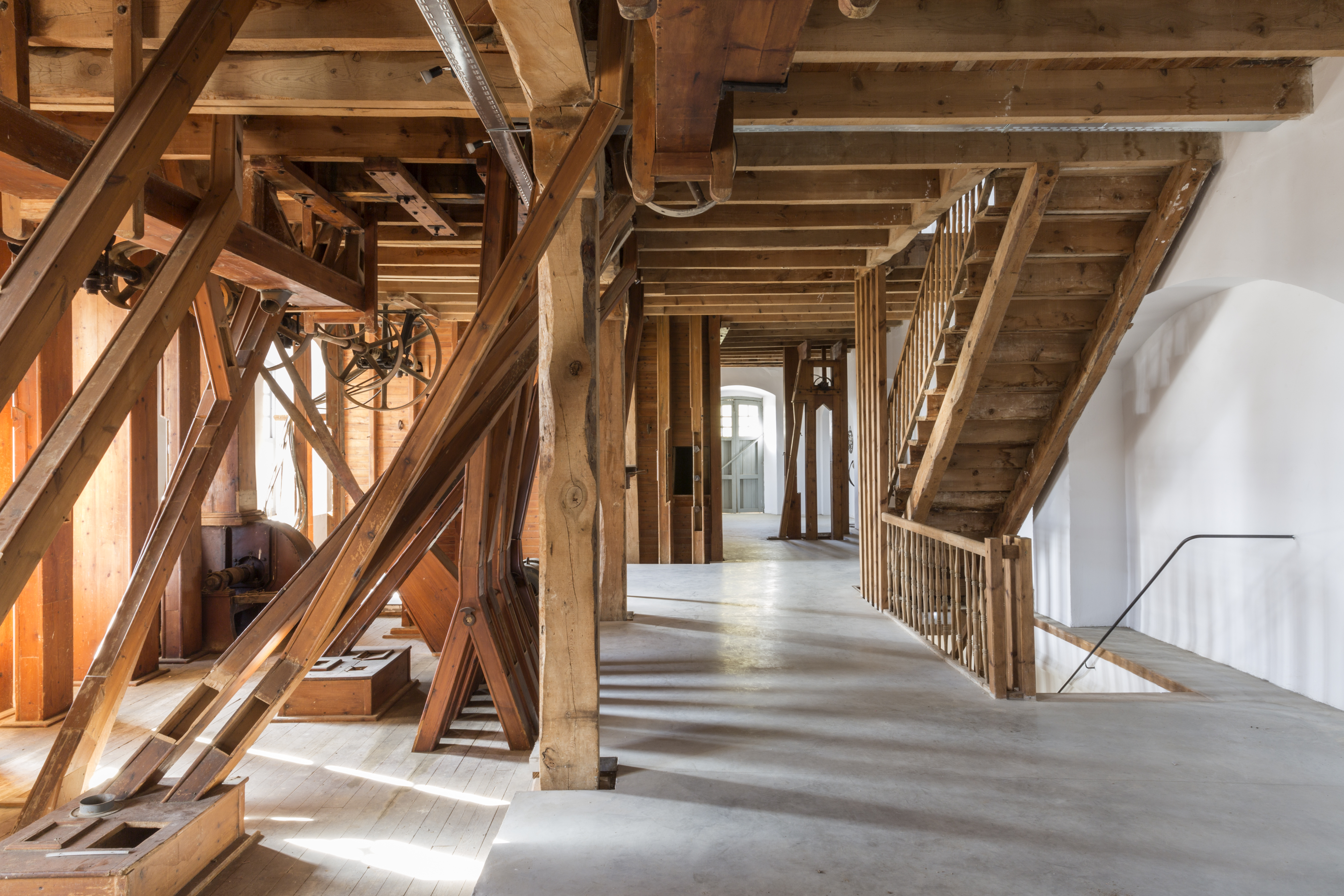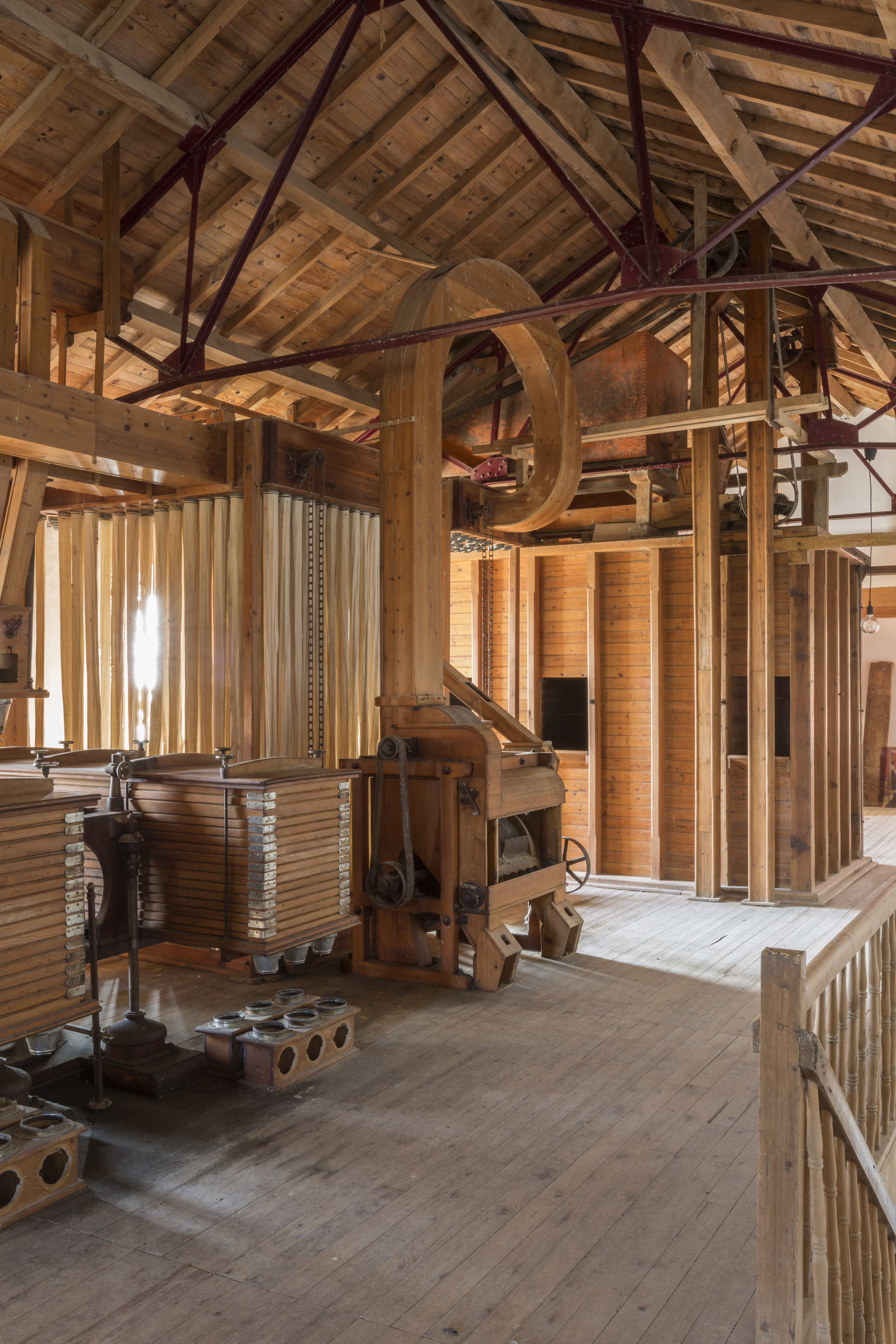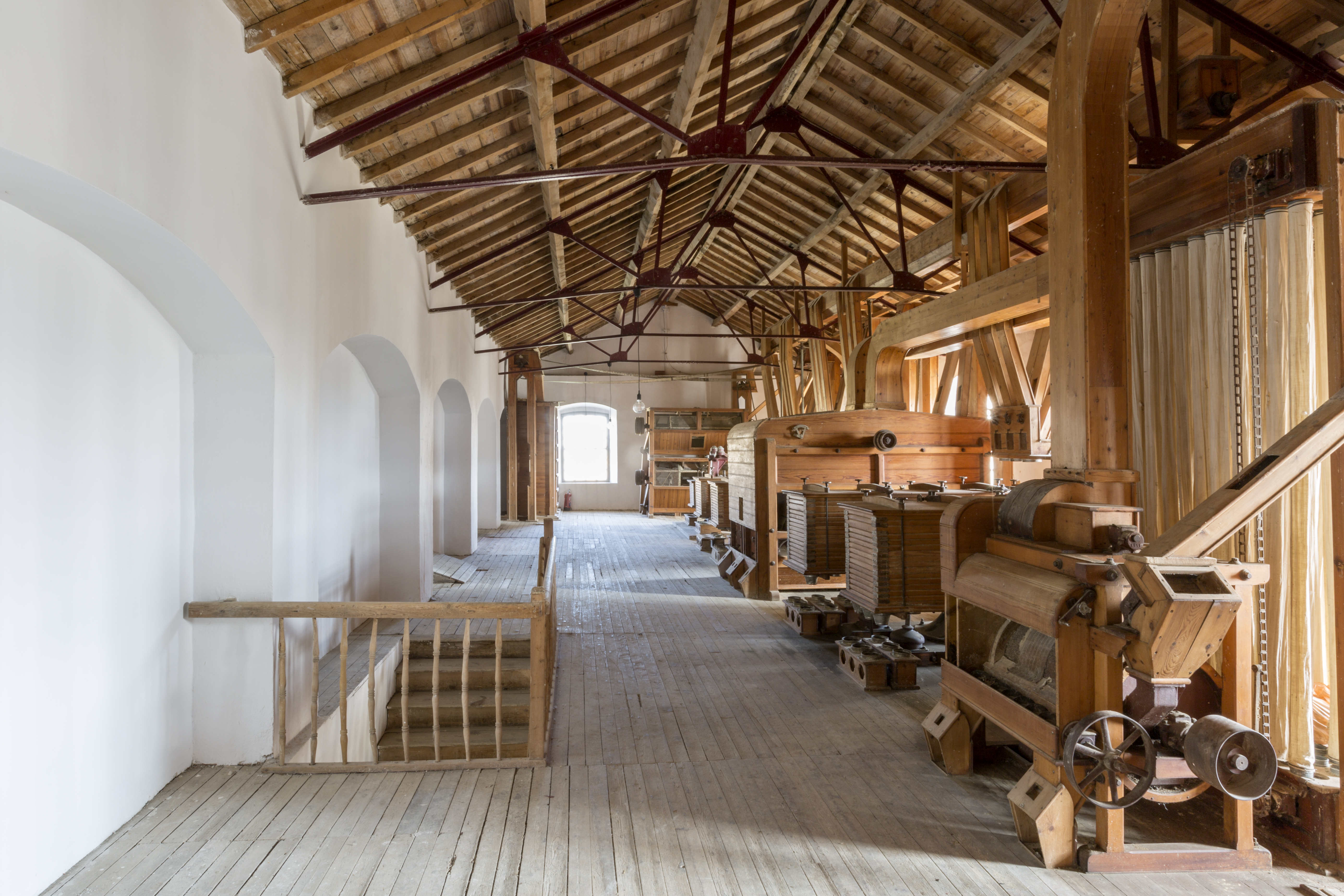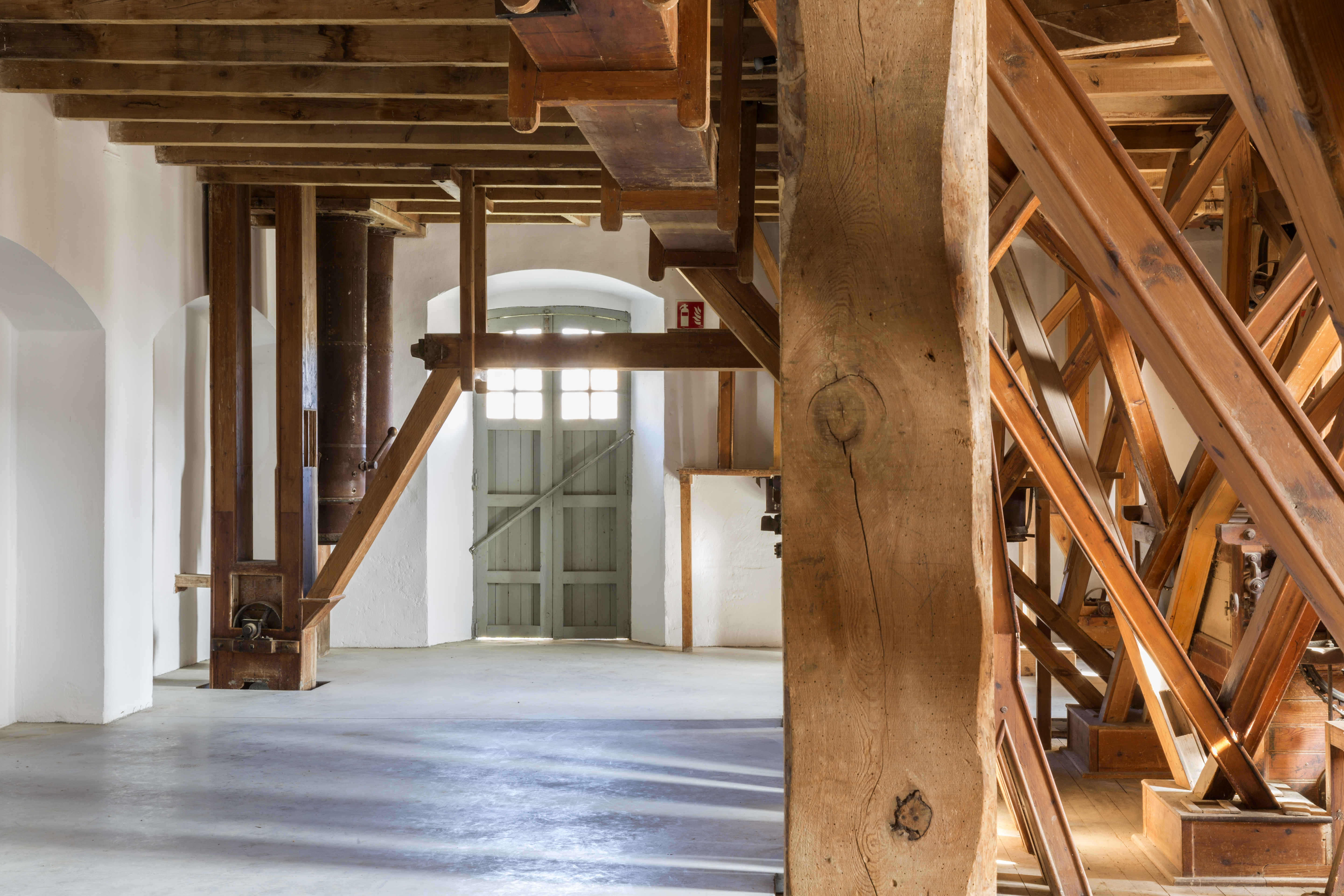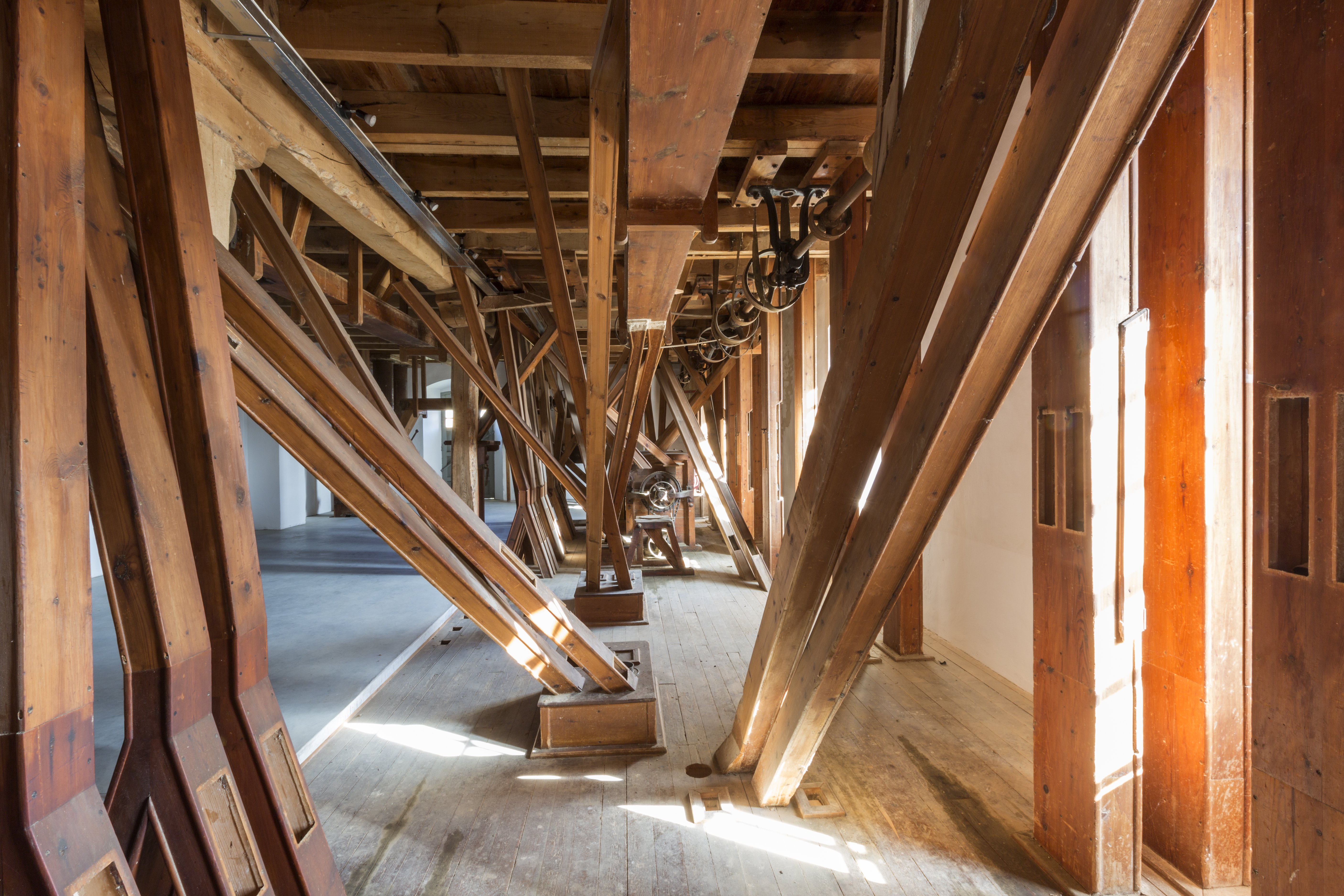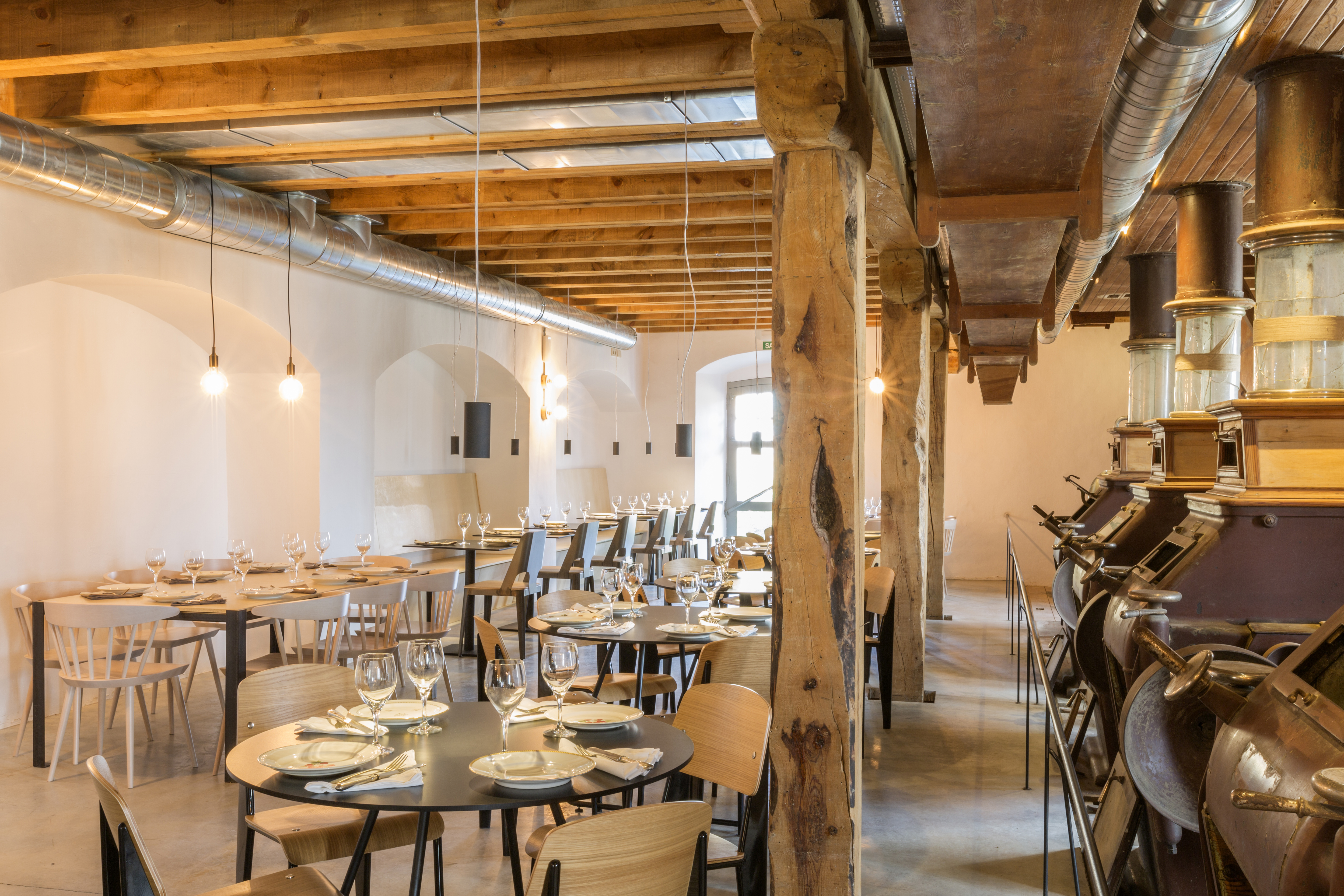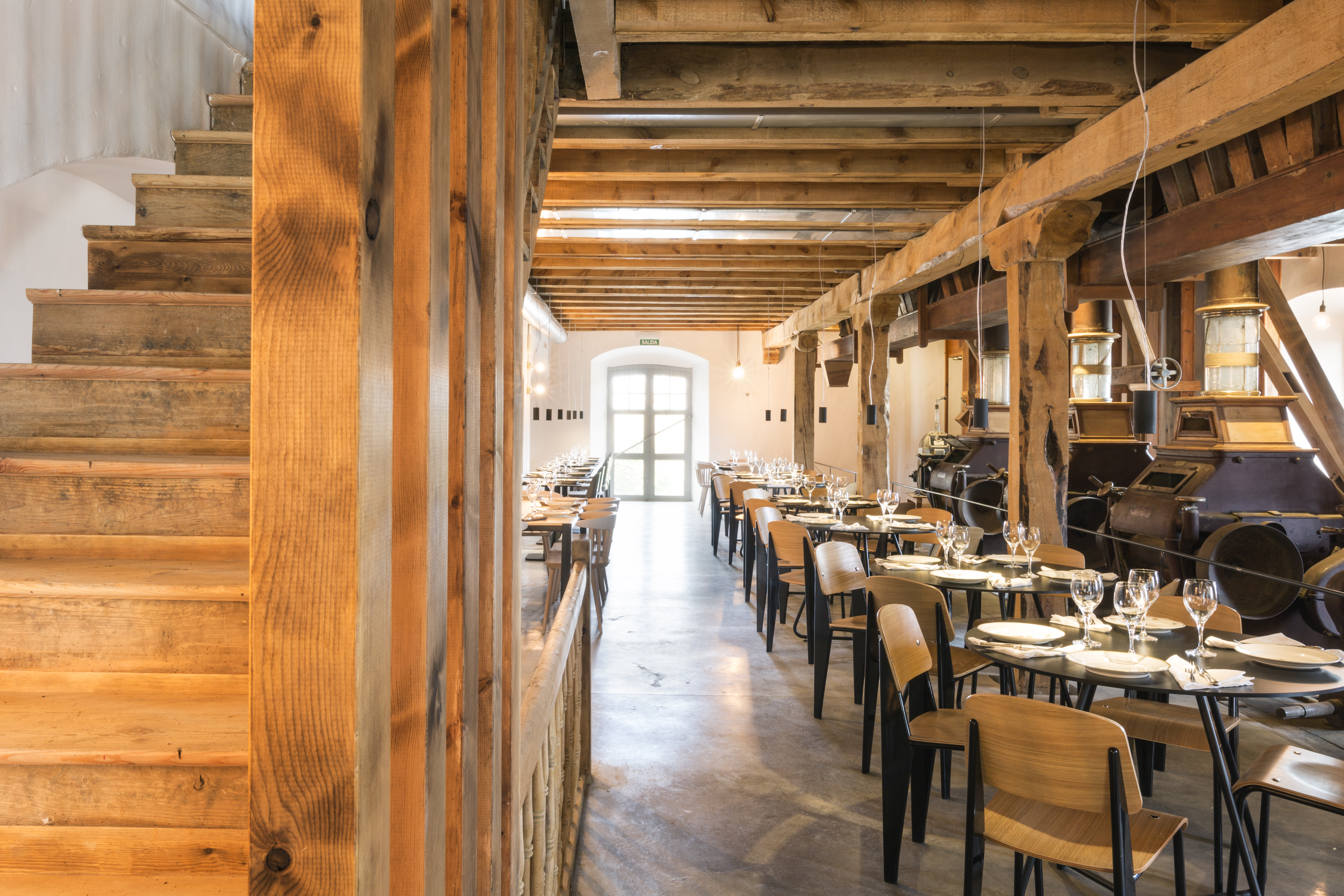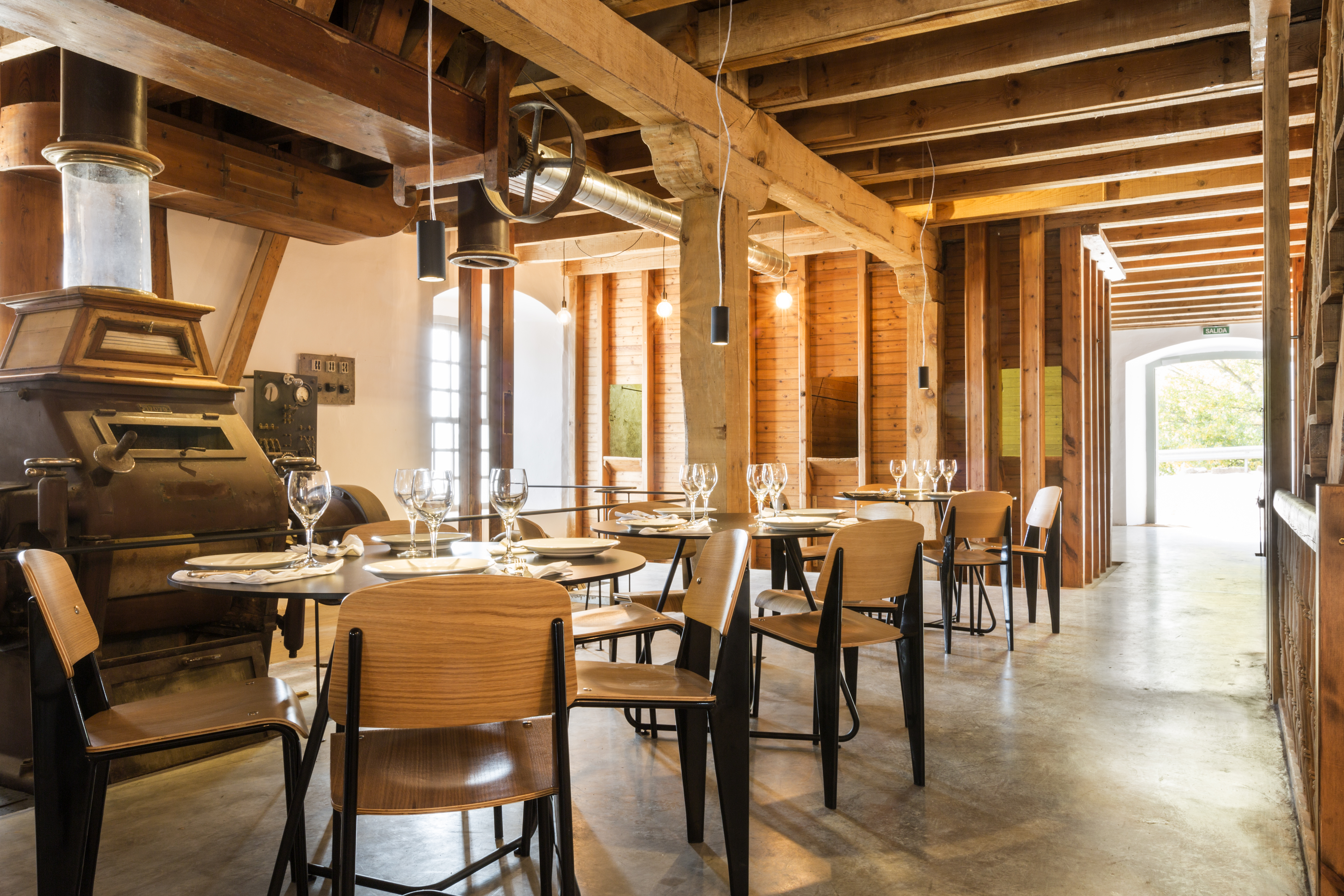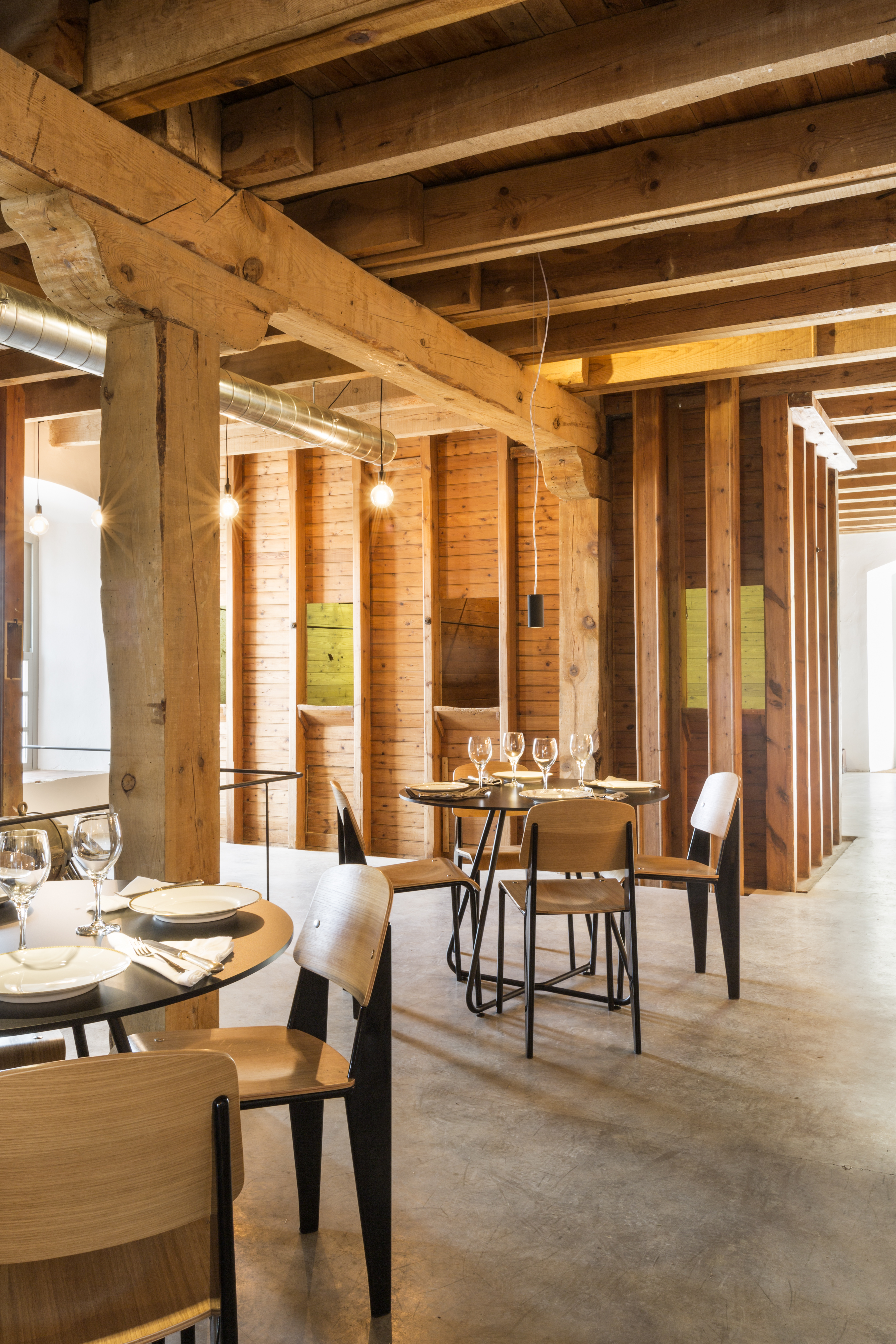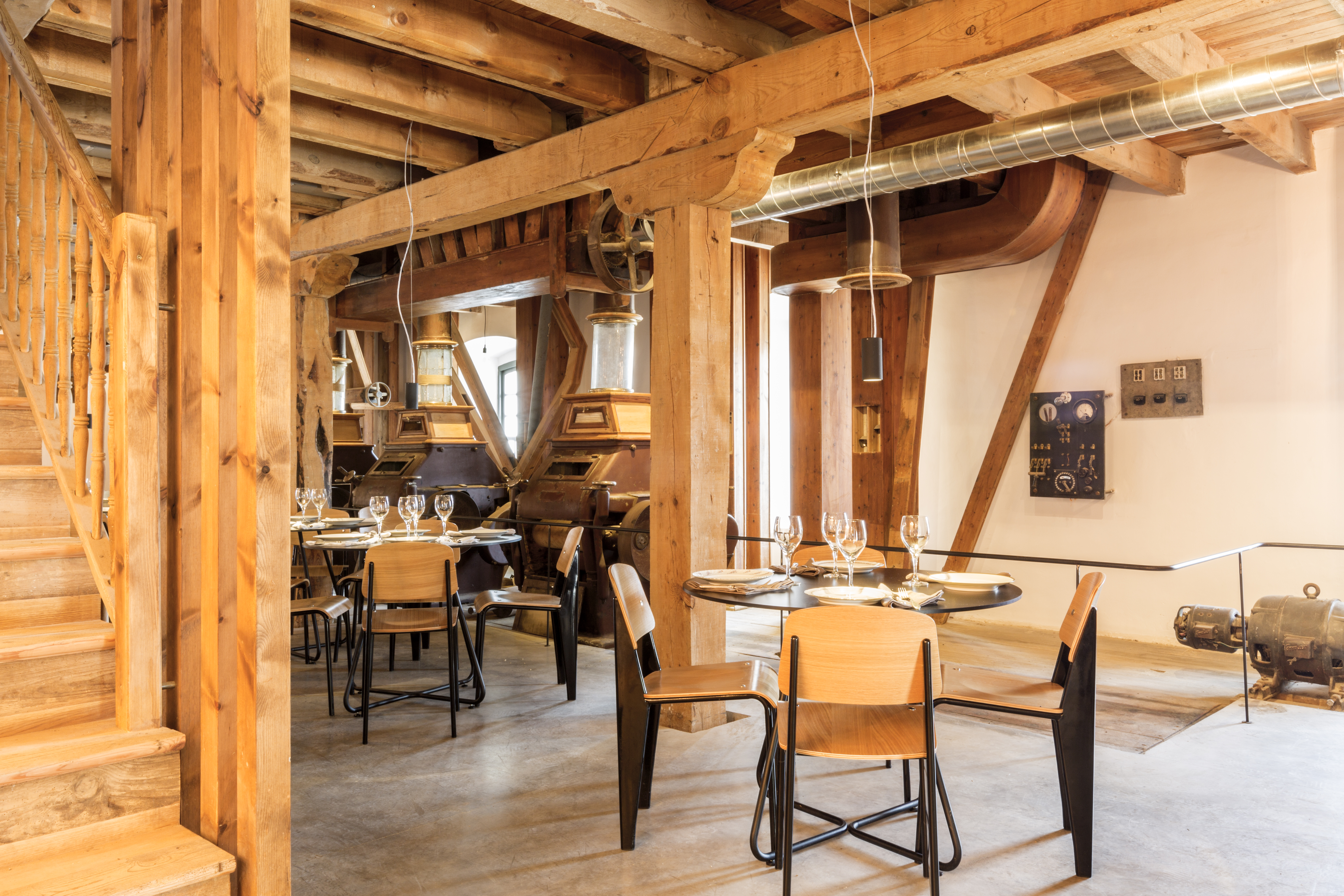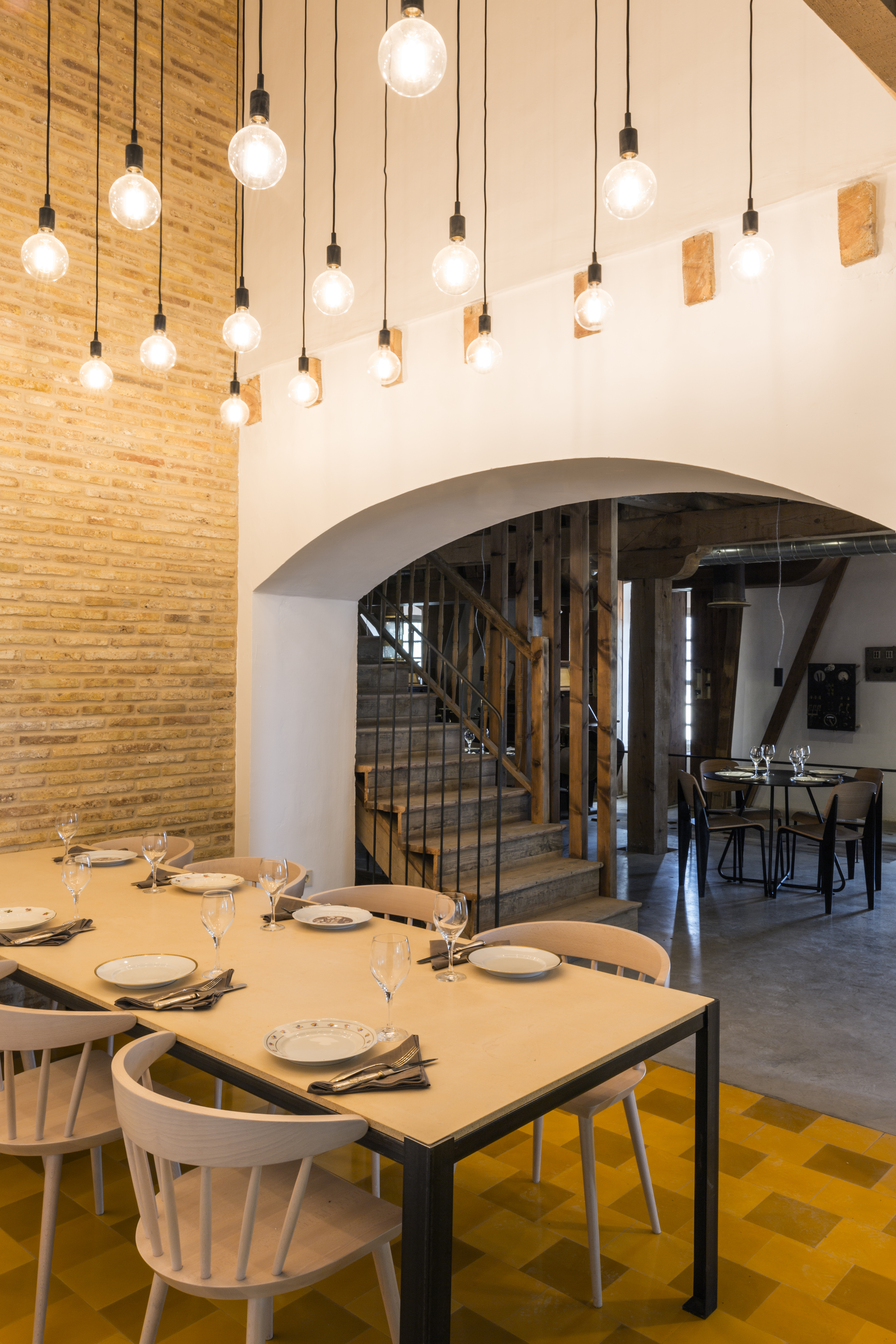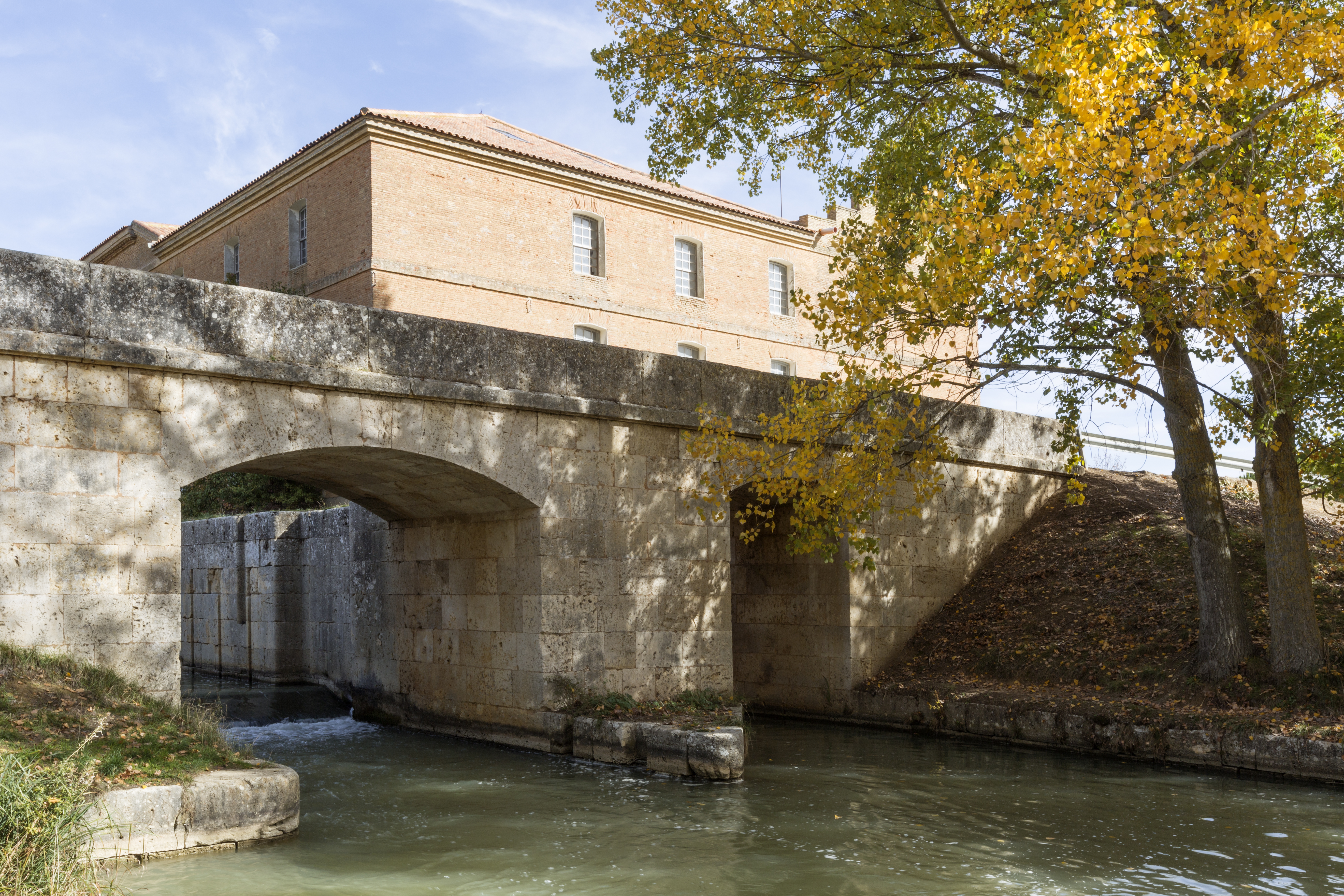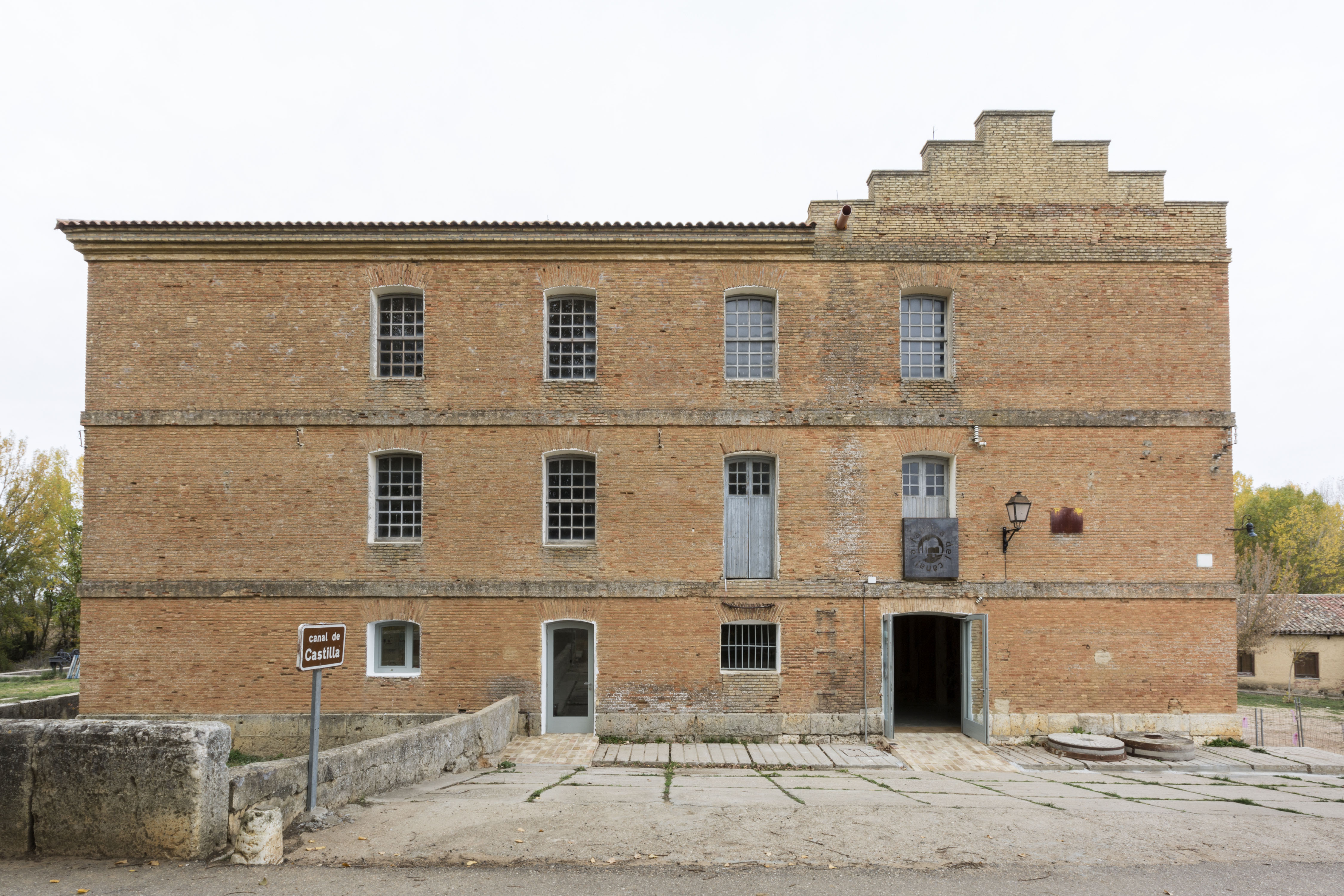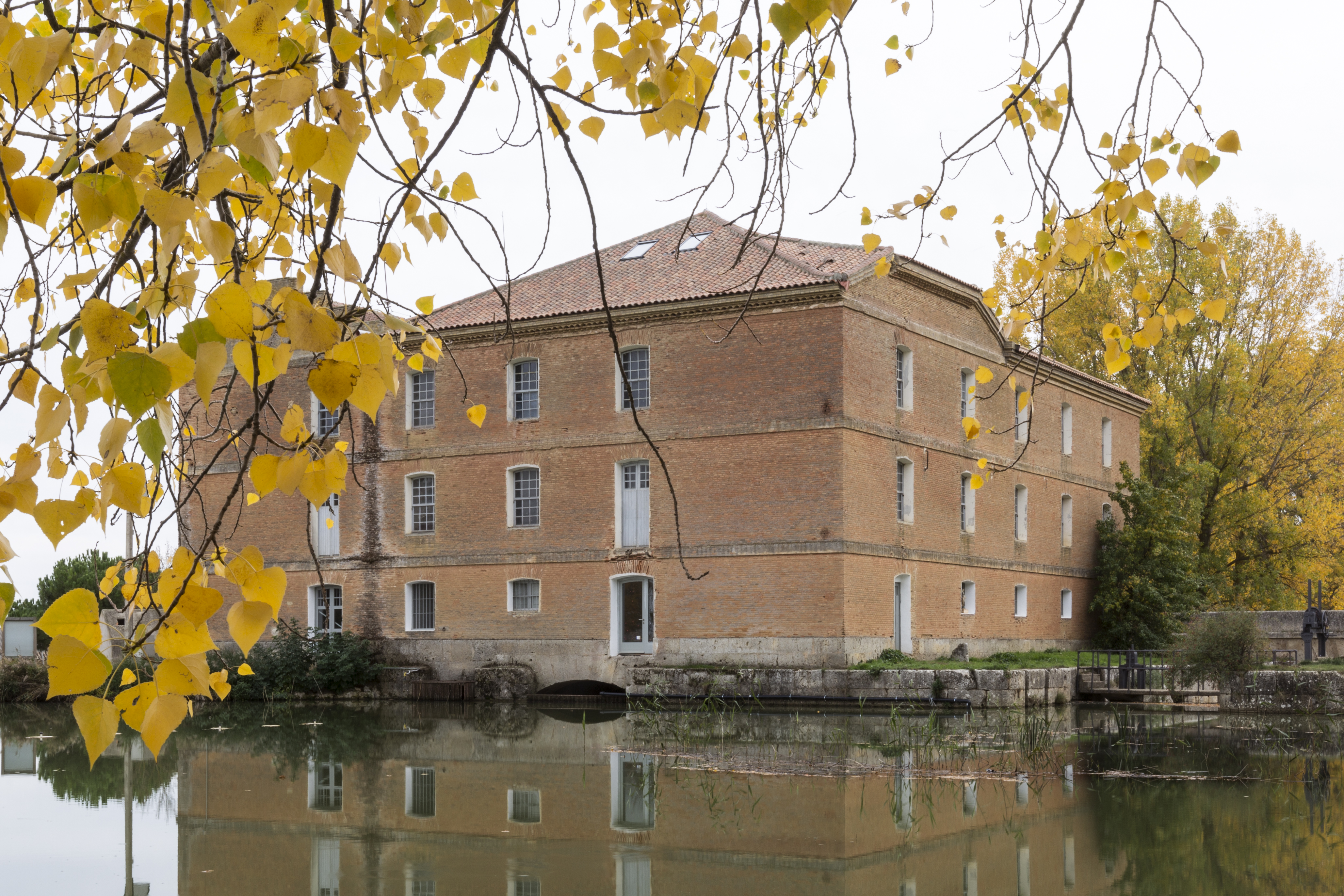Fábrica del Canal, Abarca de Campos. Palencia
owner:
Sensaciones para recordar SL
Architects
Adam Bresnick Hecht
José Antonio Salvador Polo
Team:
Miguel Peña Martínez-‐Conde Antonio Romeo Donlo
María Montoya Fernández
clerk of the works:
Fernando Tamariz Sáenz Rita Herrero Luis
Engineer:
Gabriel Elías Candela Martínez
The flourmill in Abarca de Campos was built in 1854 alongside the first lock of the Campos branch of the Canal of Castile, and functioned as such until 1979. From 1994 until 2002, it was transformed into a center for contemporary art, only to be abandoned afterwards. Its machinery still almost fully intact, it is a registered Cultural Heritage Site.
Composed of volumes built at different times, the thick adobe and brick walls envelope a 3-‐story pine assemblage of pillars, beams and floor slabs. One of the volumes is an authentic machine and houses all the machinery with belts running from floor to floor within wood-‐clad channels: a forest-‐like composition that connects the 4 floors into one whole. The other two volumes originally served as warehouse space.
The intervention installs a restaurant on the ground floor of the building, the first phase in a comprehensive project including, spa, hotel and exterior recreational areas given the Mill’s privileged location alongside a wide docking area and easy access to the Canal towpath.
The area with machinery has been converted into a museum and dining room, the culinary experience accompanied by the stilled machines. Other areas house the kitchen and service spaces, part of the ground floor reserved for the future spa, elevator and staircase to the upper levels.
The new uses have been articulated with maximum respect for the buildings’ past: resolving building pathologies ranging from leaking ceilings to problems with wood decay pests. Heating, ventilation and air conditioning, electrical systems and lighting have been installed in a manner coherent with the direct language of the original mill, these insertions clearly legible. The wood structure has been reinforced where necessary, doubling joists to meet current building code yet always facilitating the reading of old and new elements.
In the intervention the original floorboards are left exposed as ceilings and the machinery wing marked with a continuous concrete floor. To distinguish the reading of connected pieces, the floor in the bar and service areas are hydraulic encaustic tiles: a mix of three shades of ochre whose tonality connects with the wooden elements and also the nearby fields of wheat and sunflowers. The bar and benches are made with cement-‐wood composite panels, the doors in white-‐stained pine. Lighting is similarly direct: LED filament bulbs articulate the space.
